The state of research

The commitment to public health begins right here in Michigan
By Michigan Public Health staff
The University of Michigan stands out as a premier public research institution and, within it, the School of Public Health is recognized as an epicenter of innovative research and excellence in education. Last year, Michigan Public Health topped $100 million in research expenditures, boasting the highest research expenditure per faculty member across the university. The faculty are deeply engaged in uncovering sustainable solutions to pressing public health concerns while also preparing the next generation of professionals to advance a healthier and more equitable future.
Michigan is home to more than 10 million residents with 80% residing in urban environments. Surrounded by the Great Lakes, which hold 20% of the world’s fresh surface water and provide fertile soil for its important agricultural industry, Michigan’s abundant natural resources require vigilant stewardship and enduring conservation efforts. At the forefront, Michigan Public Health—the state’s foremost public health program—spearheads several cutting-edge research projects.
By leading such diverse, essential and impactful research projects, Michigan Public Health is demonstrating its commitment to addressing complex and vital public health issues to enhance the health and well-being of communities, both locally and beyond.
 Safeguarding vulnerable farmworkers
Safeguarding vulnerable farmworkers
Michigan leads the United States in cultivating a range of crops, including apples, asparagus, blueberries, carrots, cherries, maple syrup and squash. Michigan’s agricultural sector is among the most varied in the country, injecting nearly $105 billion annually into the state’s economy, according to the Michigan Department of Agriculture and Rural Development.
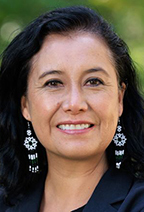
Agriculture is Michigan’s second largest industry and employs nearly 1 million people, or about a quarter of the state’s workforce. Annual harvests are made possible by about 96,000 migrant and seasonal farmworkers, who are denied workplace protections afforded most US employees. Their work each year and in every season is critical to the state’s agricultural industry.
Conditions and situations reported by farmworkers include hostile and abusive work environments such as being denied basic rights like drinking water or using the restroom, threats of being reported to Immigration Customs and Enforcement, and disregard for the health and safety of workers overall.
The Michigan Farmworker Project, a community-based participatory research project led by Michigan Public Health social epidemiologists Lisbeth Iglesias-Ríos and Alexis Handal, examines inhumane, stressful and unhealthy workplace and living conditions in Michigan’s agricultural sector. The aim is to shine a light on abuses and drive policy changes.

Their latest research, published in the Labor Studies Journal, documents a range of dehumanizing, stressful, unsafe and unhealthy workplace and living conditions. In their qualitative study, the researchers specifically explore the effects of precarious employment and labor exploitation on the health of farmworkers and their families.
“There are multisystem failures in the protection of farmworkers in Michigan,” said Iglesias-Ríos, PhD ’18, a research investigator in the Department of Epidemiology. “We identified dimensions of precarious employment and labor exploitation that involve lacking access to fundamental labor and social rights, including dehumanization, discriminatory occupational practices, and insufficient access to healthcare and social benefits.”
The 35 farmworkers in four Michigan counties interviewed for the study work with a variety of crops and food production: strawberries, blueberries, apples and asparagus, among other fruits and vegetables. The researchers collaborated with the Michigan Department of Health and Human Services (MDHHS) Office of Migrant Affairs and the Michigan Immigrants Rights Center and Farmworker Legal Services, organizations that have a long history working with the farmworker community.
“The struggles of farmworkers are not new, but are in fact the legacy of slavery and the plantation system in America that have created oppressive social and economic systems that are driven by racism, discrimination, economic interests and politics creating unequal opportunities and benefits for workers,” said Handal, associate professor of Epidemiology and Global Public Health at Michigan Public Health.
Ever since the Michigan Farmworker Project began, Handal and Iglesias-Ríos have navigated these complex challenges to give a voice to the individuals and families who provide essential work in the state. Ultimately, their hope is to continue to expand the breadth of data that can be used to improve the lives of farmworkers in Michigan and beyond.
Listen to "Health and dignity for Michigan farmworkers" on Spreaker.
RELATED CONTENT:

Learning from the pandemic, preparing for what’s next
Michigan offers a vast array of living environments, from bustling cities and tranquil villages to lakefronts and woodlands. Research from Michigan Public Health indicates that a person’s place of residence could influence the level or severity of the impact experienced from the pandemic.
Led by Nancy Fleischer, associate professor of Epidemiology, a team of researchers has been culling data from surveys of more than 5,500 Michigan residents and producing reports for the Michigan Department of Health and Human Services as part of the Michigan COVID-19 Recovery Surveillance Study, or MI CReSS.

The reports break down experiences and the effects of the virus and the pandemic on Michigan residents’ health, work, finances, personal life, mental health and more.
The goal of the partnership with MDHHS is to gather and share information that public health leaders may use to better support and protect residents when future public health threats and emergencies arise.
“Some of the differences that we see across regions may be due to underlying population vulnerabilities,” Fleischer said. “For example, Detroit had the highest proportion of adults with severe disease and also experienced many of the social impacts, including job loss, reduced work hours and difficulty paying bills.”
Michigan Public Health researcher Akash Patel evaluated the data to produce the latest report of Michiganders who had COVID-19 prior to June 1, 2022. Their responses are compared by where they live. Some noteworthy data points:
- Detroit had the highest proportion of adults with severe disease based on responses about symptom severity and hospitalization, while the southwest region of the state had the highest proportion of adults with long COVID. Washtenaw County had the lowest proportion reporting severe disease or long COVID.
- In Detroit and Macomb County, nearly 1 in 4 employed adults who worked in person lacked regular access to personal protective equipment on the job.
- More than 90% of respondents in Monroe and St. Clair counties said their physical presence was required at work, while nearly 40% of respondents in Oakland County reported not taking sick leave while ill.
RELATED CONTENT:
- Read more: MI CReSS report explores link between state's geographic regions and impact of the pandemic

Tracking cancer risk from environmental exposures
One of the many things Michigan Public Health and Rogel Cancer Center researchers are studying is the impact of known and suspected environmental exposures on cancer risk. PFAS, sometimes called “forever chemicals,” are a group of chemicals used to produce a wide range of products that are resistant to heat, oil, stains, grease and water that don’t break down in the environment.
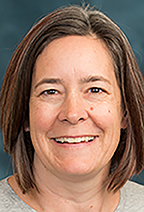
“Many communities experience a disproportionate disease burden because of failed governmental stewardship of local environments and the prioritization of private enterprise over health protection,” said principal investigator Leigh Pearce, professor of Epidemiology at the School of Public Health. “With growing awareness of the health threats of these decisions, it’s essential to put greater focus on environmental contaminants and public health safety.”
MI-CARES, or Michigan Cancer and Research on the Environment Study, is funded through a $13 million grant from the National Cancer Institute.
MI-CARES is on its way to meeting its goal of enrolling at least 100,000 people from diverse racial and ethnic backgrounds who live in environmental hotspots throughout Michigan. The program targets the Detroit metropolitan area, Flint, Grand Rapids, Kalamazoo, Lansing and Saginaw, but enrollment is open to all Michiganders ages 25-44. Participants will be followed over time through surveys as well as blood and saliva samples to track environmental exposures and cancer biomarkers.
Listen to "Putting oncologists out of business" on Spreaker.
RELATED CONTENT:
- Enroll in MI-CARES: micares.health

Initiative builds health equity through housing
An initiative led by Michigan Public Health researchers aims to identify strategies to promote health equity in housing systems and policy. The Housing Solutions for Health Equity (HSHE) initiative is led by Roshanak Mehdipanah, an associate professor of Health Behavior and Health Education. Much of her work and research focuses on the intersection of housing and public health.

“HSHE understities in access to decent, safe, affordable and healthy housing persist in Michigan and across the United States,” Mehdipanah said. “Our research and actions confront this issue head-on by identifying strategies to improve housing opportunities with a resulting improvement in health equity. Our mission is to inform local, state and national policy through interdisciplinary research on housing as it relates to equity in health, race, socio-economic status and aging. This perspective of housing as a human right shapes our work.”
Some current projects include conducting a spatial analysis of housing discrimination in the Detroit Metropolitan Area, analyzing housing solutions emerging from the healthcare sector, and evaluating housing programs and policies in Detroit and other cities.
RELATED CONTENT:

Guaranteed income program in Ann Arbor
Led by Poverty Solutions at the University of Michigan, Guaranteed Income to Grow Ann Arbor (GIG A2) is a two-year guaranteed income pilot to provide monthly payments of $528 to 100 entrepreneurs with low and very low incomes in Ann Arbor. The City of Ann Arbor selected the University of Michigan to implement the pilot and study its effects.
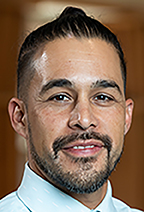
Bill Lopez, clinical assistant professor of Health Behavior and Health Education, is one of three university faculty researchers leading the pilot program.
“We often think of health interventions as interventions that specifically increase access to medications or to medical care, but there are many other aspects of our lives that actually keep us healthy,” Lopez said. “For members of marginalized communities, maintaining their health often requires navigating government systems working against them, and there are rarely, if ever, government programs to support maintaining one’s health in this way.”
RELATED CONTENT:
- Read more: Q&A: What does guaranteed income mean for Ann Arbor?

$17.5M to establish infectious disease modeling center
Last fall, the Centers for Disease Control and Prevention's Center for Forecasting and Outbreak Analytics announced funding to develop an outbreak response network that uses data to support decision-makers during public health emergencies.
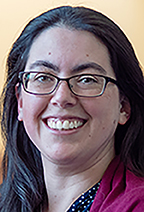
Michigan Public Health was selected as one of the 13 partners and will receive roughly $17.5 million over five years to establish the Michigan Public Health Integrated Center for Outbreak Analytics and Modeling (MICOM).
“This center is a remarkable opportunity to build on the strong partnerships between the University of Michigan and the Michigan Department of Health and Human Services to integrate outbreak analytics, modeling and forecasting into public health practice and improve public health in Michigan and beyond,” said Marisa Eisenberg, associate professor of Epidemiology and Complex Systems and director of the center along with Emily Martin, co-director and associate professor of Epidemiology.
The establishment of a network is the first step in creating a nationwide resource for outbreak analytics, disease modeling and forecasting to support more effective response during public health emergencies.
RELATED CONTENT:
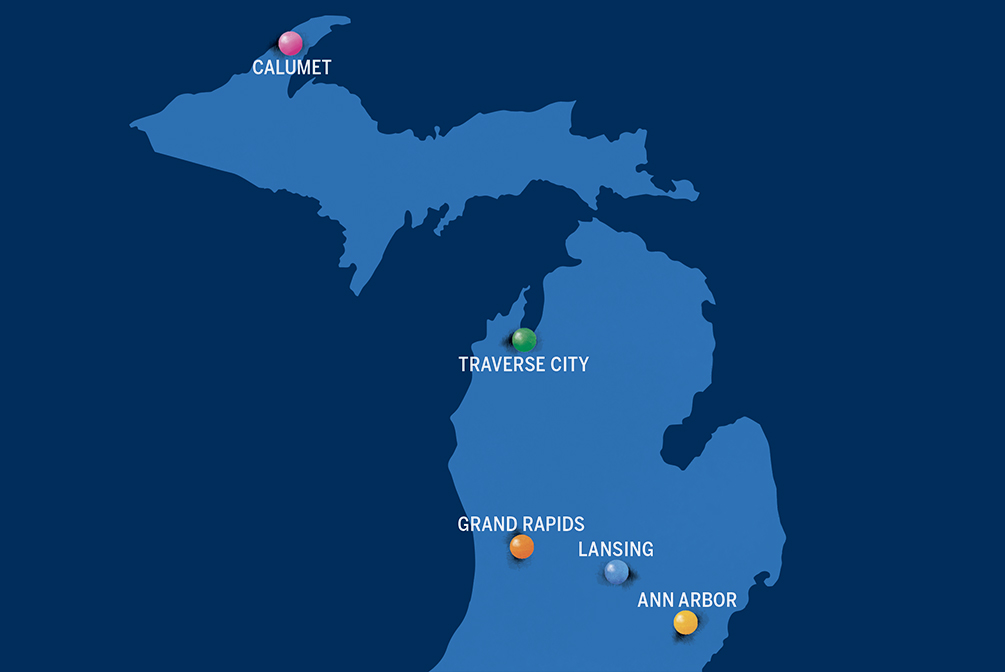
Taking care of Michigan by Michigan
Each year, our faculty train a graduating class of more than 500 students who are in-demand across the world, including here in Michigan. From organizers in community health departments to CEOs in major healthcare systems, thousands of Michigan Public Health alumni are using their education and expertise to create a healthier Great Lakes State for our 10 million residents. Here’s a brief snapshot:
- Jonathan Brueggeman, MHSA ’23, regional chief medical officer of Aspirus Health in Calumet
- Darryl Lesoski, MPH ’97, medical director of Occupational Medicine at Munson Medical Center in Traverse City
- James Mitchiner, MPH ’96, chief medical officer at iMPROve Health in Grand Rapids and clinical assistant professor at the University of Michigan Medical School in Ann Arbor
- Carole Montgomery, MHSA ’15, executive medical director at Respecting Choices in Grand Rapids
- Nike Shoyinka, MPH ’17, health officer and medical director for the Ingham County Health Department in Lansing
